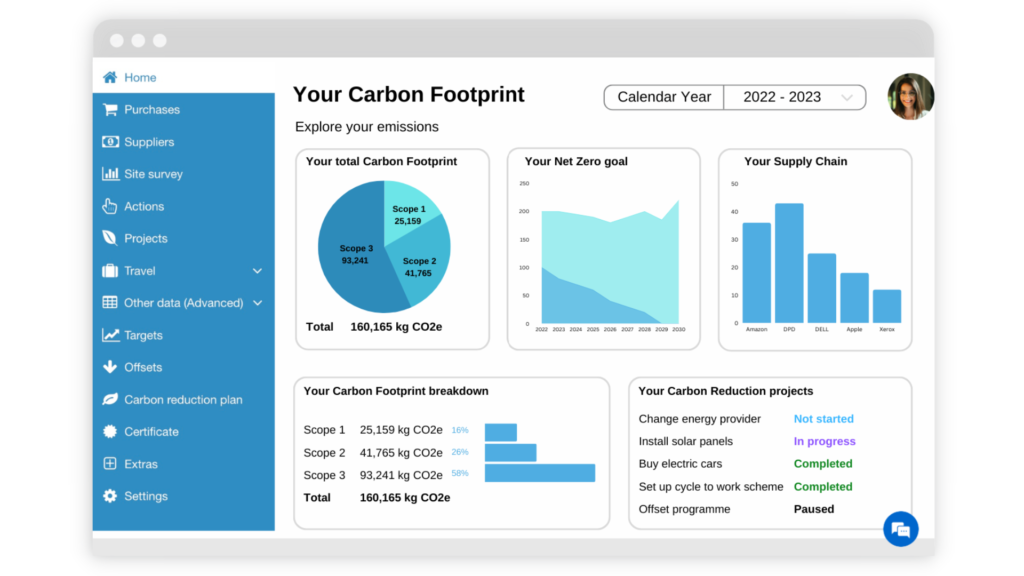Let’s address the key questions surrounding Scope 3 emissions and understand their significance in legal reporting, particularly in frameworks like ESOS and SECR in the UK. Let’s get into the intricacies of Scope 3 carbon reporting.
Understanding Scope 3: The Greenhouse Gas (GHG) Protocol categorises emissions into three groups – Scope 1, Scope 2, and Scope 3. Simplified,
- Scope 1 covers direct emissions like company-owned gas and car fuel.
- Scope 2 involves indirect emissions from purchased electricity.
- Sope 3 encompasses all other indirect emissions.
Legal Reporting: ESOS and SECR
Currently, reporting all Scope 3 emissions in ESOS (Energy Savings Opportunity Scheme) and SECR (Streamlined Energy and Carbon Reporting) is not mandatory. However, both frameworks are under review. In the upcoming changes (likely post-2022), there is a high probability that Scope 3 emissions will become a reporting requirement. The specifics of which subcategories will be included are yet to be determined by the government.
Should you include your scope 3 emissions when calculating you Carbon Footprint?
The unequivocal answer is yes – Scope 3 emissions should be included in your carbon footprint. While Scope 1 and 2 emissions may seem more direct, Scope 3 emissions, which include 15 subcategories like purchased goods and services (supply chain emissions), commuting, and more, often constitute a significant portion of a company’s carbon footprint. Excluding them would result in an incomplete and inaccurate portrayal of your carbon impact.
It’s crucial to recognise that calculating Scope 3 emissions can be complex, and precision in data is often challenging. However, acknowledging and addressing these indirect emissions is vital for a comprehensive understanding of your organisation’s carbon footprint.
If you’re wondering how to calculate Scope 3 emissions, consider utilising specialised software tools like the Enistic software. These tools can assist in navigating the complexities and ensuring accurate and thorough reporting.

In summary, while the inclusion of Scope 3 emissions in legal frameworks is evolving, the importance of incorporating them into your carbon footprint is clear. As regulations continue to progress, staying informed and proactively managing Scope 3 emissions will contribute to a more accurate representation of your environmental impact.
For more details on Scope 3 calculations or methodologies, explore our additional videos released at the end of 2021 and into 2022. If you have any questions or need further assistance, feel free to reach out.




